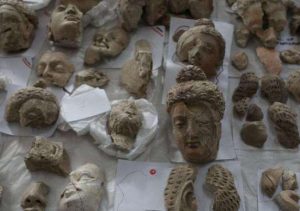
It is said that there are nearly 1,700 kung-an (Japanese: koan) that Zen masters used. In Zen, practitioners use kung-an as subjects for meditation until their minds come to awakening. The difference between a kung-an and a math problem lies in the fact that while the solution of the math problem lies in the problem itself, the response to the kung-an lies in the life of the practitioner. The kung-an is not an enigma to resolve, and we cannot define it as a theme or subject of meditation. A kung-an is only a skillful means to help a practitioner reach his goal. It can also be an obstacle to awakening for a practitioner who thinks that truth is hidden in the kung-an and can be interpreted in conceptual terms.
Kung-an were popular during the T’ang Dynasty in China. Before this time, Zen masters did not use kung-an. Therefore we can conclude that kung-an are not indispensable to the practice of Zen.
Ten Thousand Sam?dhi-s (poem by Zen Master Hahn Am)
Deep pine tree valley:
Sitting quietly,
The moon was bright last night.
The ten thousand sam?dhi-s are not necessary.
When thirsty, drink.
When tired, sleep.
Quiet Night, the Geese Cry
Sitting silently in a mountain temple in the quiet night,
Extreme quiet and stillness are original naturalness.
Why does the Western wind shake the forest?
A single cry of the cold-weather geese fills the sky.






